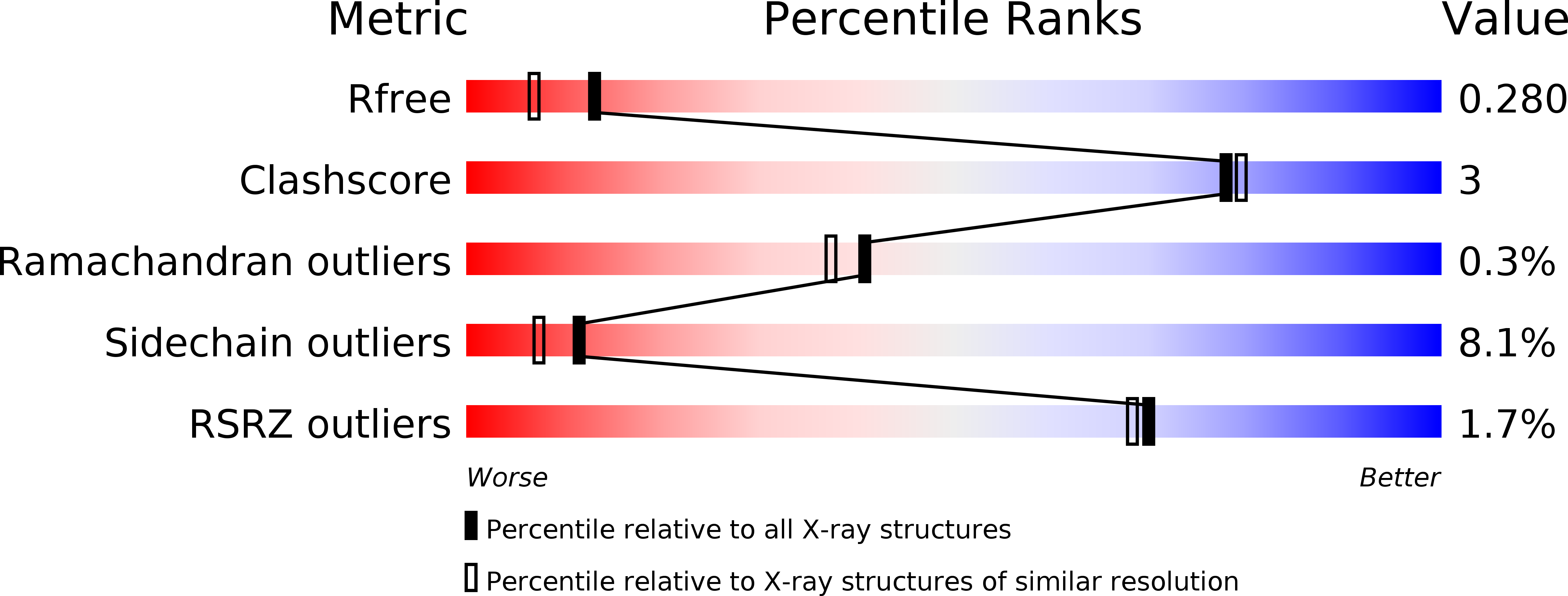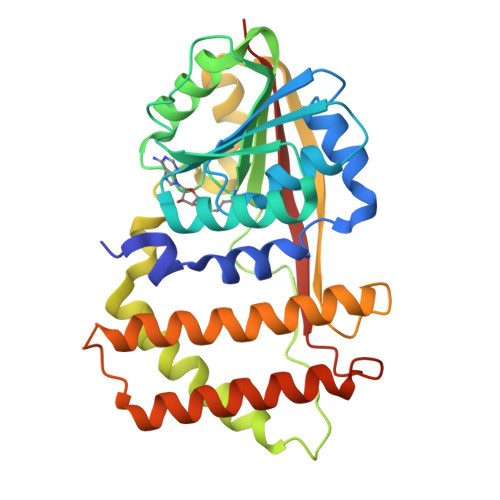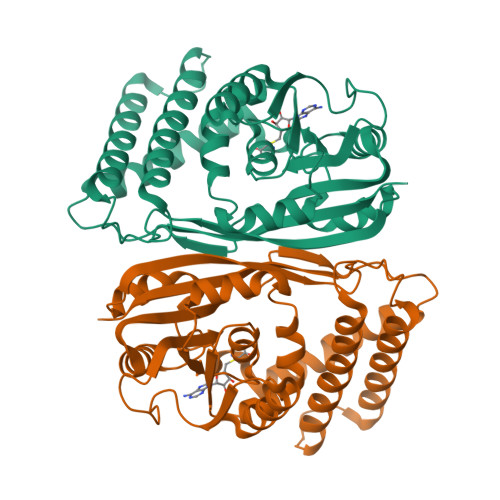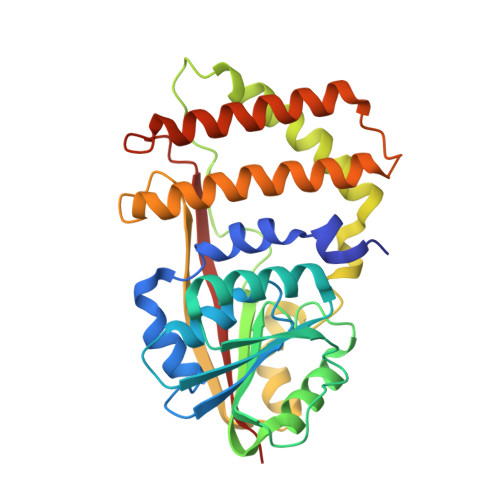Characterization of a Dehydratase and Methyltransferase in the Biosynthesis of Ribosomally Synthesized and Post-translationally Modified Peptides in Lachnospiraceae.
Huo, L., Zhao, X., Acedo, J.Z., Estrada, P., Nair, S.K., van der Donk, W.A.(2020) Chembiochem 21: 190-199
- PubMed: 31532570
- DOI: https://doi.org/10.1002/cbic.201900483
- Primary Citation of Related Structures:
6UAK - PubMed Abstract:
As a result of the exponential increase in genomic data, discovery of novel ribosomally synthesized and post-translationally modified peptide natural products (RiPPs) has progressed rapidly in the past decade. The lanthipeptides are a major subset of RiPPs. Through genome mining we identified a novel lanthipeptide biosynthetic gene cluster (lah) from Lachnospiraceae bacterium C6A11, an anaerobic bacterium that is a member of the human microbiota and which is implicated in the development of host disease states such as type 2 diabetes and resistance to Clostridium difficile colonization. The lah cluster encodes at least seven putative precursor peptides and multiple post-translational modification (PTM) enzymes. Two unusual class II lanthipeptide synthetases LahM1/M2 and a substrate-tolerant S-adenosyl-l-methionine (SAM)-dependent methyltransferase LahS B are biochemically characterized in this study. We also present the crystal structure of LahS B in complex with product S-adenosylhomocysteine. This study sets the stage for further exploration of the final products of the lah pathway as well as their potential physiological functions in human/animal gut microbiota.
Organizational Affiliation:
Department of Chemistry and Howard Hughes Medical Institute, University of Illinois at Urbana-Champaign, 600 South Mathews Avenue, Urbana, IL, 61801, USA.

















